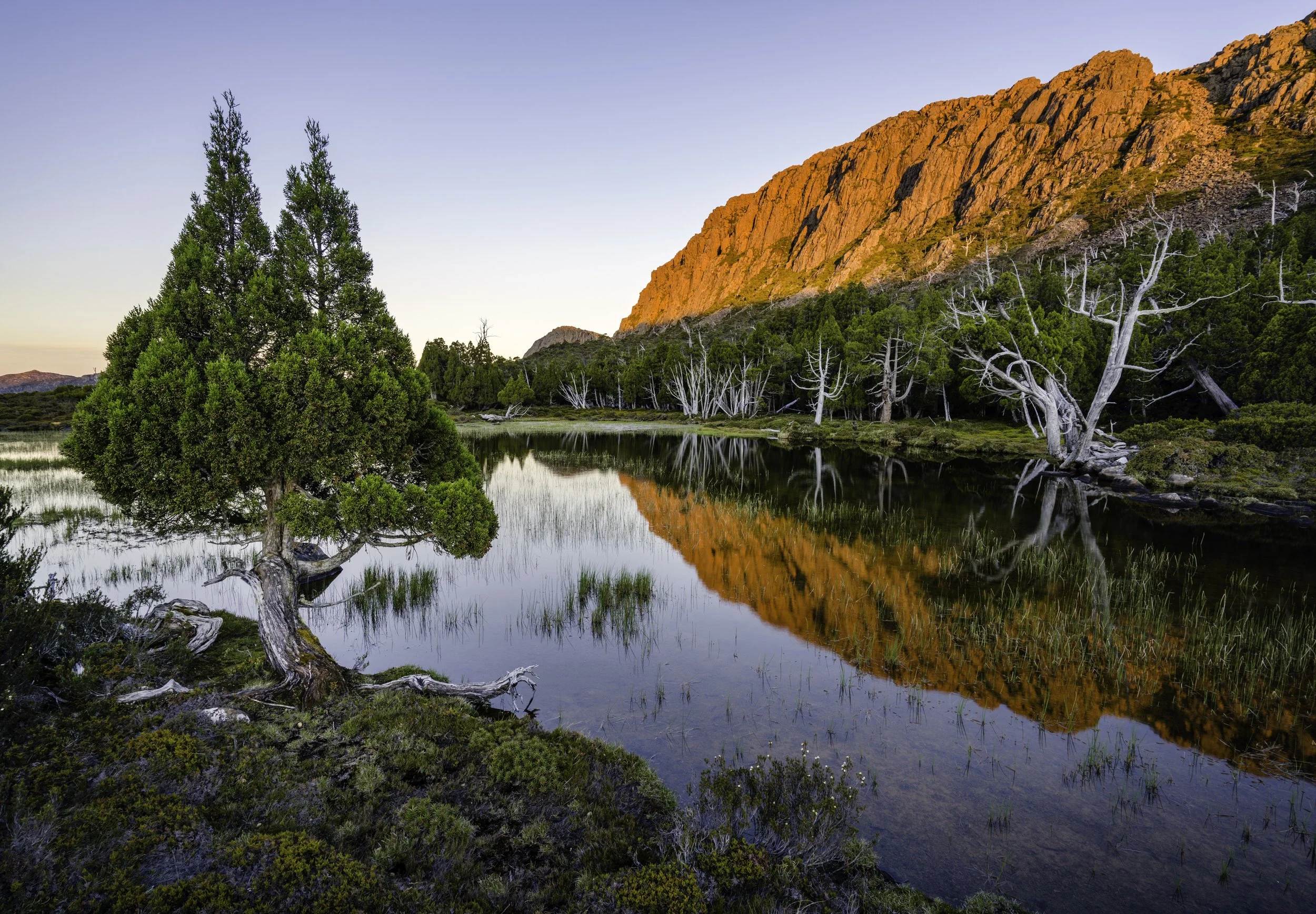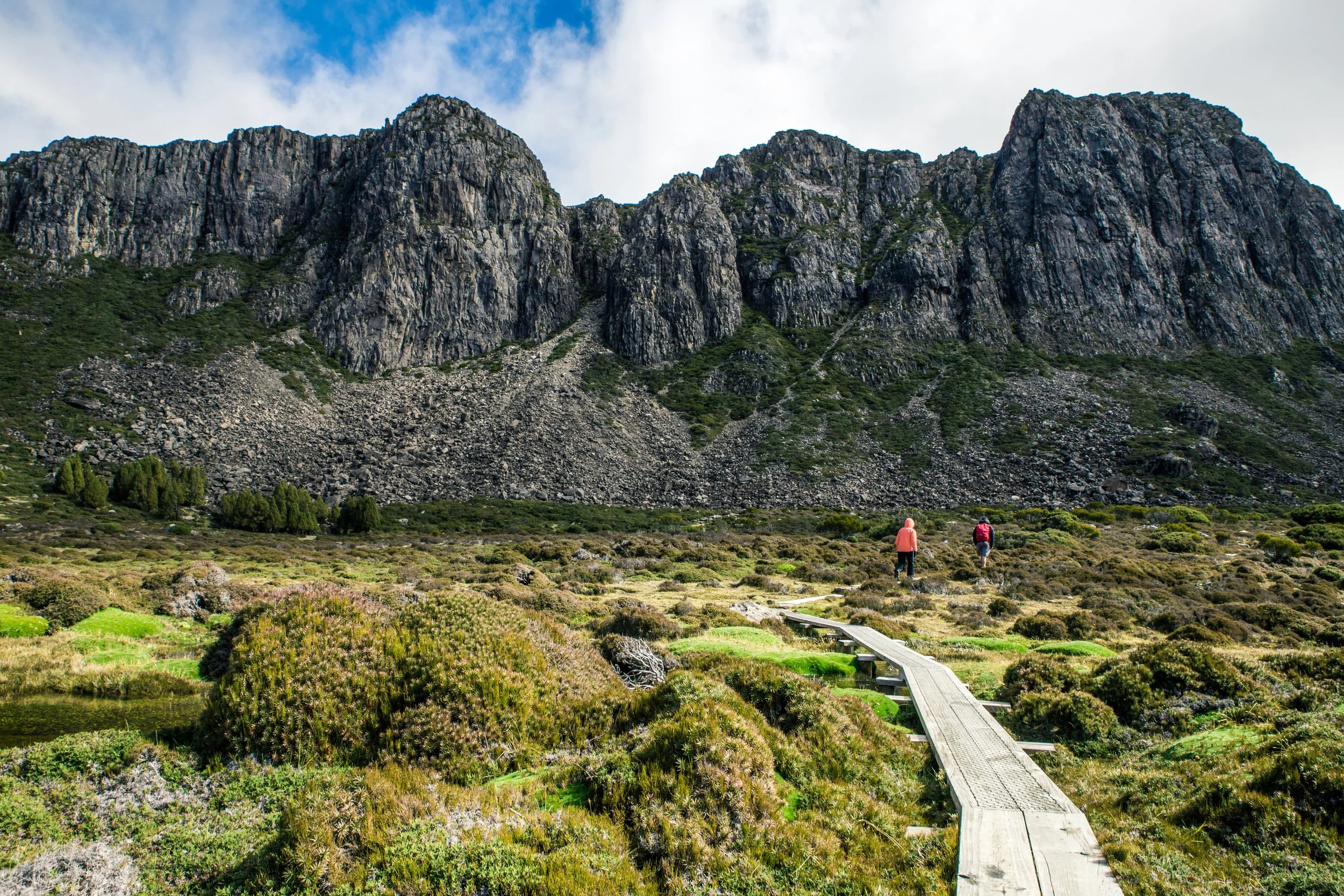
Walls of Jerusalem
Walls of Jerusalem
Highlights of the park include groves of 1,000-year-old pencil pines and olive-green cushion plants, as well as fields of scoparia that ignite in pinks, oranges and whites during the spring. Bennett’s wallabies, pademelons and quolls all inhabit the park, as do Tasmanian devils, echidnas and platypus.
The Walls of Jerusalem has long been the territory of the Big River nation and several Aboriginal heritage sites are found throughout the park today. By building shelters, using fire and managing resources, they were able to thrive in the harsh sub-alpine and alpine conditions for centuries.
Europeans first arrived in the area in the early 19th century, with bushrangers choosing the remote Central Highlands as their hideout. Eventually, grazing licenses were issued and stock keepers soon settled, driving the Indigenous people from their homelands. Bush huts and stockyards were established, together with pencil pine dwellings where trappers stayed during the winter while collecting possum and wallaby pelts.
It was James Scott (who surveyed the area in the mid-19th century) who first referred to the area as the Walls of Jerusalem. Launceston-based hiking enthusiast Reg Hall went on to continue the biblical theme in naming many of the area’s other features. In 1982, it was proclaimed a national park before becoming part of the Tasmanian Wilderness World Heritage Area the following year.
Walls of Jerusalem Walk
Distance: 23 km | Time: 3-4 days (not including side mountain trails) | Start: Wild Dog Creek Campsite
Wild Dog Creek Campsite is the base for exploring Walls of Jerusalem National Park and is a three-kilometre hike from the carpark. From here, you can follow the trail that leads through Herods Gate and out Damascus Gate to the historic Dixons Kingdom Hut. Several side trails access the surrounding mountain summits, including Solomons Throne, The Temple and Mount Jerusalem.
The trails range from rocky earth to raised boards that are designed to protect the alpine vegetation and marshes. It’s important that you stay on the formed and hardened tracks and only venture off the main trail if you are an experienced bushwalker with sound compass and map reading skills. All trekkers must be fully self-sufficient while in Walls of Jerusalem National Park.
Wild Dog Creek Campsite has tent platforms, toilets and running water and Leave No Trace principles apply throughout the park. There are no other facilities within the park and due to the fragile nature of the alpine vegetation, it is recommended that you don’t camp within the Central Walls area. If you must camp away from the Wild Dog Creek Campsite, avoid setting up adjacent to water as these areas are particularly prone to erosion.
Please be aware that as this is an exposed alpine region, weather can change dramatically and you should be prepared for all conditions. Blizzards are known to occur throughout the year and visibility can be reduced significantly, making the trails difficult to find.
Packages and transport to the Walls of Jerusalem
Luke TscharkeLuke TscharkeO&M St John Photography



